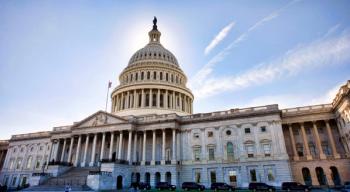
Debate escalates over reform implementation
Washington is usually quiet in August, as lawmakers go home and government officials take vacations. This year, teams of health policy staffers are working overtime to finalize regulations, fine-tune IT systems and work with states and insurers to get exchanges ready by October 1.
These efforts were side-tracked last month by rebukes from Republicans about the one-year delay in enforcing the employer mandate. Two House committees put Treasury Department and Health and Human Services (HHS) officials on the hot seat at hearings on the operational and financial impacts of postponing.
Administration leaders explained that the delay is necessary to provide companies time to implement new rules on providing information on workforce size, compensation and coverage. Such data is needed for the IRS and exchange operators to calculate coverage affordability and individual eligibility for subsidies.
The delay could eliminate some $10 billion in previously expected revenue coming from fines on employers failing to provide coverage. More workers may look to exchanges for coverage and subsidies, further raising program costs.
The mandate delay also encouraged House leaders to schedule votes on bills to postpone the individual mandate and to codify delay in enforcing the employer mandate. The measures had support from only a few Democrats and have little chance of enactment, but the votes give Republicans ammunition to use against Democrats who support “Obamacare.” Defenders of reform emphasized that the mandate delay demonstrates administration willingness to accommodate constituents, and that exchanges and relevant policies are on track.
Exchange challenges
HHS has the huge task of operating a federally facilitated exchange (FFE) for 34 states-with 15 states carrying out some functions like plan management. Only 16 states and D.C. are setting up their own exchanges.
In June, the Government Accountability Office (GAO) issued a warning that many exchange operations may not be fully functional on time. The employer-mandate delay lowered projections, calculating that some 30 million will remain without insurance-not 23 million. Insurers are busy recalculating market potential, risk adjustment strategies, marketing plans and systems for ensuring accurate enrollment and payment data.
Last month, HHS awarded a $1.2 billion, five-year contract to defense contractor Serco to process and review individual applications filed with exchanges and to determine penalty exemptions and subsidy qualifications. Contractors have also signed on to run call centers and the federal “data hub.” Final rules were issued for training navigators as well.
Before consumers can obtain comparative information on insurance options, exchange operators have to assess plans for actuarial value, essential benefits, network adequacy and nondiscriminatory features.
Most states have adopted a clearinghouse model that allows all qualified carriers to market plans via the exchange. While the federal government won’t be an “active purchaser” that blocks high-cost plans from exchange listing, the HHS secretary recently said that the government must take a close look at premiums and indicate to insurers if they are comparatively expensive.
Newsletter
Get the latest industry news, event updates, and more from Managed healthcare Executive.






















































